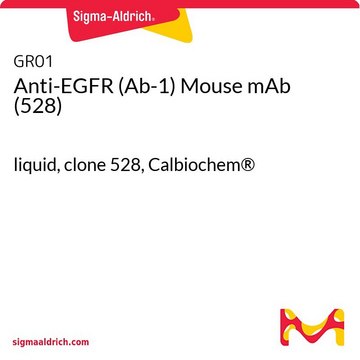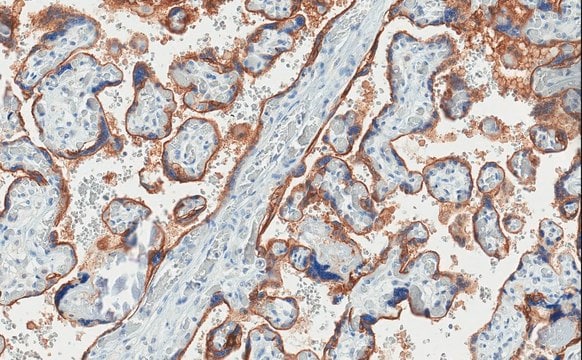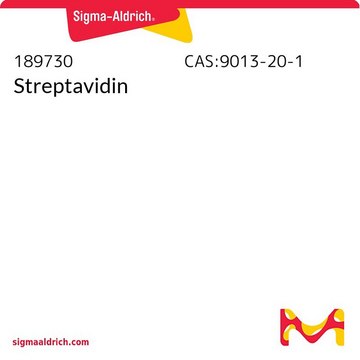GR01L
Anti-EGFR (Ab-1) Mouse mAb (528)
lyophilized, clone 528, Calbiochem®
Sinonimo/i:
Anti-Epidermal Growth Factor Receptor
About This Item
Prodotti consigliati
Origine biologica
mouse
Livello qualitativo
Forma dell’anticorpo
purified antibody
Tipo di anticorpo
primary antibodies
Clone
528, monoclonal
Forma fisica
lyophilized
non contiene
preservative
Reattività contro le specie
human
Non deve reagire con
rat, mouse
Produttore/marchio commerciale
Calbiochem®
Condizioni di stoccaggio
OK to freeze
Isotipo
IgG2a
Condizioni di spedizione
ambient
Temperatura di conservazione
2-8°C
modifica post-traduzionali bersaglio
unmodified
Informazioni sul gene
human ... EGFR(1956)
mouse ... Egfr(13649)
rat ... Egf(25313)
Descrizione generale
Immunogeno
Applicazioni
Frozen Sections (2.5 µg/ml)
Immunofluorescence (5 µg/ml)
Immunoprecipitation (1 µg/sample)
Neutralization Studies (see comments and application references)
Paraffin Sections (see application references)
Attenzione
Stato fisico
Ricostituzione
Risultati analitici
A-431 cells or skin tissue
Altre note
Masui, H., et al. 1984. Cancer Res.44, 1002.
Reynolds, F. H., Jr., et al. 1981. Nature 292, 259.
Ushiro, H. and Cohen, S. 1980. J. Biol. Chem.255, 8363.
Note legali
Non trovi il prodotto giusto?
Prova il nostro Motore di ricerca dei prodotti.
Codice della classe di stoccaggio
11 - Combustible Solids
Classe di pericolosità dell'acqua (WGK)
WGK 1
Certificati d'analisi (COA)
Cerca il Certificati d'analisi (COA) digitando il numero di lotto/batch corrispondente. I numeri di lotto o di batch sono stampati sull'etichetta dei prodotti dopo la parola ‘Lotto’ o ‘Batch’.
Possiedi già questo prodotto?
I documenti relativi ai prodotti acquistati recentemente sono disponibili nell’Archivio dei documenti.
Il team dei nostri ricercatori vanta grande esperienza in tutte le aree della ricerca quali Life Science, scienza dei materiali, sintesi chimica, cromatografia, discipline analitiche, ecc..
Contatta l'Assistenza Tecnica.








